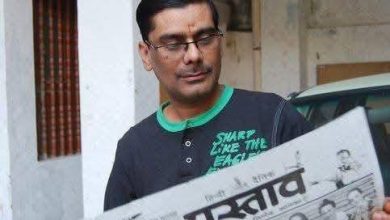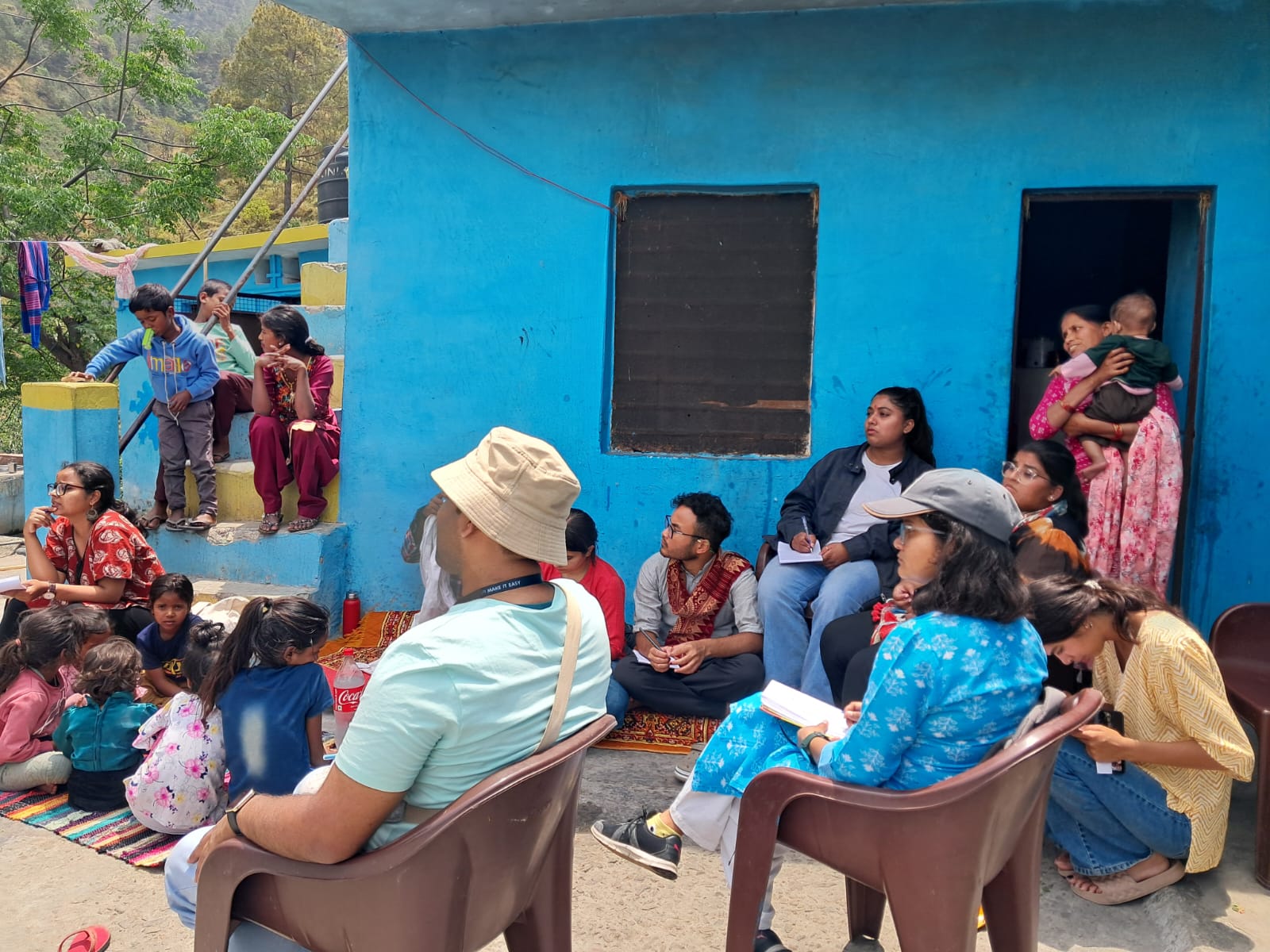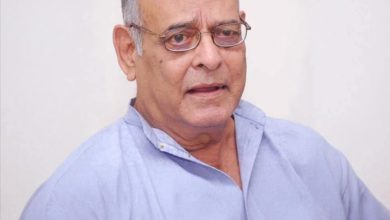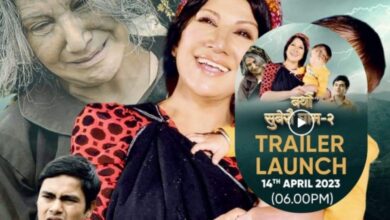Folk Traditions of Uttarakhand Remain Interconnected
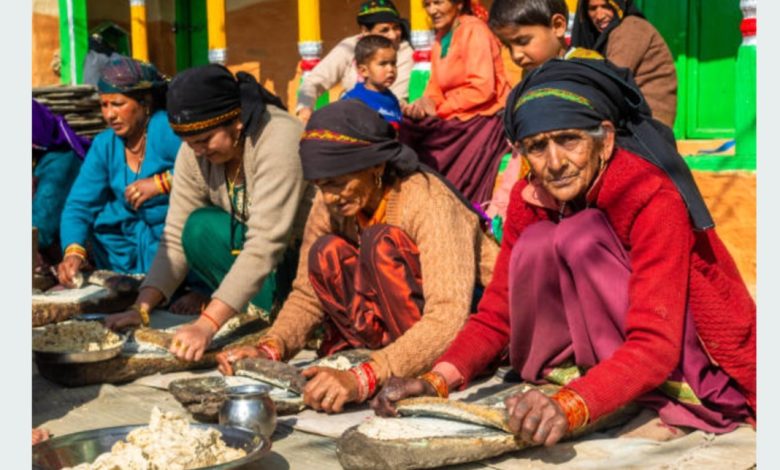
By Suresh Nautiyal Greenananda





The folk traditions of Uttarakhand, though immensely rich, have historically not enjoyed the recognition or institutional support granted to the folk traditions and artists in many other Indian states. Until Uttarakhand attained statehood in the year 2000, its cultural heritage was largely marginalised within the broader framework of its parent state, Uttar Pradesh.
Yet, the mountains have nurtured a living archive of art, dance, song, and ritual that continues to define the collective identity and wisdom of the region’s diverse communities.
Origins of the Folk Traditions
The origins of Uttarakhand’s folk dances and traditions cannot be located in a single moment; rather, they evolved through centuries of interaction between people, deities, ecology, and social organisation. Anthropologically, these dances represent ritualised expressions of memory, community bonding, and adaptation to the mountain environment.
The people of Uttarakhand—drawn from varied ethnic, linguistic, and occupational backgrounds—brought their own practices into the region, where they were reshaped through interaction with local festivals, deities, and ecological rhythms.
These traditions became carriers of collective identity. Sociologically, folk dances were never only entertainment; they transmitted oral traditions, preserved mythological narratives, and encoded agricultural cycles. In a largely non-literate society, dance became a vessel of knowledge, values, and continuity.
Situated along ancient pilgrimage routes and migration corridors, the region absorbed influences from Indo-Aryan practices, tribal rituals, and the devotional bhakti movements. Yet a unifying ethos prevailed: Reverence for nature, faith in cyclical renewal, and affirmation of community through artistic expression. Even today, these dances demonstrate what anthropologists wish to term as cultural resilience—the ability of communities to preserve identity while adapting to change.
Examples of Folk Dances
Langvir Nritya from Garhwal, especially Tehri, is acrobatic and martial in spirit. Men climb a fixed bamboo pole and perform daring stunts while musicians play the dhol and damau. It reflects valour, discipline, and festive energy.
Pandava Nritya, rooted in the Mahabharata, enacts episodes of the epic with dramatic storytelling and dance, often with elaborate costumes and masks. Performed by men from marginalised groups, it combines devotion with artistry, keeping mythic memory alive.
Jhora of Kumaon is a community dance where men and women form circles, holding arms and moving in synchrony to the beat of the hurka. It celebrates spring, weddings, and fairs, dissolving social barriers and fostering unity. I still recall a spring evening in the Kumaon mountains, when men and women locked arms in the Jhora, their steps keeping pace with the fading light, as if the whole valley was breathing in rhythm.
Chholiya, also from Kumaon, is a vigorous sword dance symbolising martial tradition of the hills. Dancers in warrior attire perform mock battles with swords and shields, accompanied by traditional instruments like the ransingha and turi.
Chhopati songs and dances embody love and playful dialogue. Performed at fairs and gatherings, these witty exchanges between young men and women capture the social life and light-heartedness of mountain communities.
Chanchari, from both Kumaon and Garhwal, features slow, semi-circular formations of men and women dancing together. Rooted in themes of love, it is linked etymologically to the Sanskrit charchari, meaning a song integrated with rhythm.
Barada Nati of Jaunsar is performed during festivals, where men and women in colourful attire move in synchronised semicircles. Graceful and inclusive, it epitomises community participation.
Today, artists are reviving endangered forms like Hurka Bol and Chhapeli or blending tradition with modern idioms to highlight issues such as migration, climate change, and social transformation. Each artist, whether preserving, reinterpreting, or innovating, is a custodian of continuity and relevance.
Together, these forms reveal that Uttarakhand’s dances are not relics of the past but living embodiments of cultural memory, spirituality, and the rhythm of everyday life.
Regional Similarities and Distinctions
Although Garhwal, Kumaon, and Jaunsar exhibit distinctive traditions, they are variations on a shared cultural theme. Geography, historical encounters, and social structures shaped local nuances, but the philosophical and historical roots remain interconnected.
For example, Kumaon celebrates Holi with unique fervour: Baithaki Holi in classical ragas, Khari Holi with energetic singing and dancing, and Mahila Holi emphasising women’s participation. In contrast, Garhwal and Jaunsar mark Holi more modestly.
The festivals like Bagwal of Devidhura and Magh Mela of Uttarkashi hold greater significance. Likewise, Chholiya is iconic in Kumaon, while Garhwal favours Pandava Nritya and Langvir Nritya, and Jaunsar maintains ritual forms tied to its distinct heritage.
Thus, while expressions differ, all regions contribute to Uttarakhand’s composite identity, proving that cultural diversity here strengthens unity rather than fragmenting it.
Artists: Custodians and Innovators
Culture and art evolve over generations, like rivers fed by countless tributaries. Uttarakhand’s folk heritage is the outcome of contributions from countless singers, dancers, storytellers, painters, and crafts-persons, each adding layers to the collective memory.
Legendary folk singers such as Chandra Singh Rahi, Narendra Singh Negi, Preetam Bharawan, Gopal Babu Goswami, Kabootari Devi, and Heera Singh Rana gave voice to the joys and struggles of mountain life, making folk music a medium of identity and protest. Jeet Singh Negi, regarded as the father of modern Uttarakhandi music, enriched the tradition with his compositions. Women singers like Madhuri Barthwal and Basanti Bisht safeguarded ritual songs, ensuring continuity of sacred traditions.
In theatre, personalities such as Mohan Upreti staged Kumaoni plays and took the culture beyond regional boundaries. Playwrights including Lalit Mohan Thaplyal, Rajendra Dhasmana, Parashar Gaur, Suresh Nautiyal, and Dinesh Bijalwan addressed ecological and social concerns through drama. Visual artists and crafts-persons preserved practices like Aipan (ritual floor art), wood carving, and weaving, while younger creators reinterpret traditions through film, literature, and digital platforms.
Recognition and Challenges
Despite its vibrancy, Uttarakhand’s folk culture remains little known internationally. Successive governments have done little beyond token gestures to promote it. Yet occasional breakthroughs reveal global potential—for instance, two dhol masters from a remote village were invited to teach at a US university, proving that authentic presentation can attract international appreciation. Till date, dhol and damau summon both festivity and reverence.
However, sustained recognition requires systematic promotion without diluting the spirit of the tradition. Dedicated cultural academies, institutional support, and professional platforms are urgently needed to safeguard and showcase this heritage.
Folk Dances as Cultural Meeting Grounds
The folk dances of Uttarakhand are more than performance; they are philosophical articulations of life, worldview, and interconnectedness. They demonstrate how diverse cultural streams—Garhwali, Kumaoni, Jaunsari, Bhotia, Buxa, Raji, Tharu, and others—converge in a harmonious mosaic. Over centuries, even migrant communities like Gurkhas, Bengalis, and Punjabis have contributed to this cultural amalgam.
Thus, today’s traditions stand not only as evidence of heritage but also as testimonies of assimilation and resilience. They embody the principle of “variations on the same theme,” where diversity and unity reinforce each other.
From my experience of witnessing these performances, the folk traditions of Uttarakhand feel less like staged entertainment and more like philosophical articulations of life.
Costumes and Ornaments
Costumes and ornaments are inseparable from dance and ritual, reflecting ecological conditions and social identities. The Kumaoni women wear pichhora a saffron-printed veil worn by Kumaoni women during rituals and festivals, is not only attire but a blessing carried on cloth. And, the Garhwali female dancers adorn heavy silver jewellery. The Bhotia communities use woollen garments suited to high-altitude life, while the Jaunsari attire, with bold jewellery and headgear, adds its unique flavour.
Despite regional differences, a common aesthetic unites them: vivid colours, rhythm, and symbolic meaning. The materials—wool, cotton, silver—mirror the environment and trade networks of the mountains. Costumes are not mere embellishments but embodiments of history, ecology, and community spirit.
Creativity and Institutional Gaps
While many individuals strive to sustain folk traditions, only a few make substantial contributions. Experiments and innovations exist, but systematic institutional support is lacking. What Uttarakhand urgently needs are well-supported academies for fine arts, performing arts, and literature, with coordinated efforts to nurture talent. Without such structures, the future of folk traditions will remain uncertain.
Heritage and Neglect
As noted earlier, Uttarakhand’s cultural traditions were historically marginalised, a neglect that extends back centuries. Mountain and forest cultures across India have often been overshadowed by plains-based traditions. Ironically, regions with profound ecological wisdom and artistic richness have been least supported by cultural institutions.
This neglect is not merely cultural but sociological, for folk arts preserve historical memory, ecological knowledge, and social values. When marginalised, entire ways of knowing risk extinction. Uttarakhand embodies multiple cultural worlds: Garhwali and Kumaoni traditions rich with oral epics and community dances; Jaunsari culture with its links to the Mahabharata; and Bhotia communities like the Jaad, Rang, Marchha, and Shauka with trans-Himalayan influences.
To support Uttarakhand’s folk heritage is not only to preserve art but to honour civilisational wisdom and the resilience of mountain communities who sustained it despite centuries of neglect. In fact, heritage is not a burden but a guiding light. And when people sing, dance, and create together, they not only recall their ancestors but also plant seeds for generations to come, seeds that may bloom in ways we cannot yet imagine, but whose roots will always be Himalayan.
Epilogue
The folk traditions of Uttarakhand remind us that culture is a living stream, not a museum piece. Each beat of the dhol, each swirl of the ghagra, each song and tale is a declaration of dignity, resilience, and joy amidst hardship. These traditions are interconnected because the mountains themselves are interconnected—valleys echo into valleys, rivers join rivers, and communities shape one another through shared memory.
Diversity here is not fragmentation but harmony. In the face of migration, modernisation, and ecological crisis, these traditions offer visions of balance, resilience, and collective celebration. They show us that identity nourishes unity, and roots nourish growth.
To honour Uttarakhand’s folk traditions is to affirm the eternal bond between people, community, and nature. Heritage is not a burden but a guiding light. And when people sing, dance, and create together, they not only recall their ancestors but also plant seeds for generations to come.
Thus, while expressions differ, all regions contribute to Uttarakhand’s composite identity… In other words, these different expressions weave into Uttarakhand’s larger identity.


